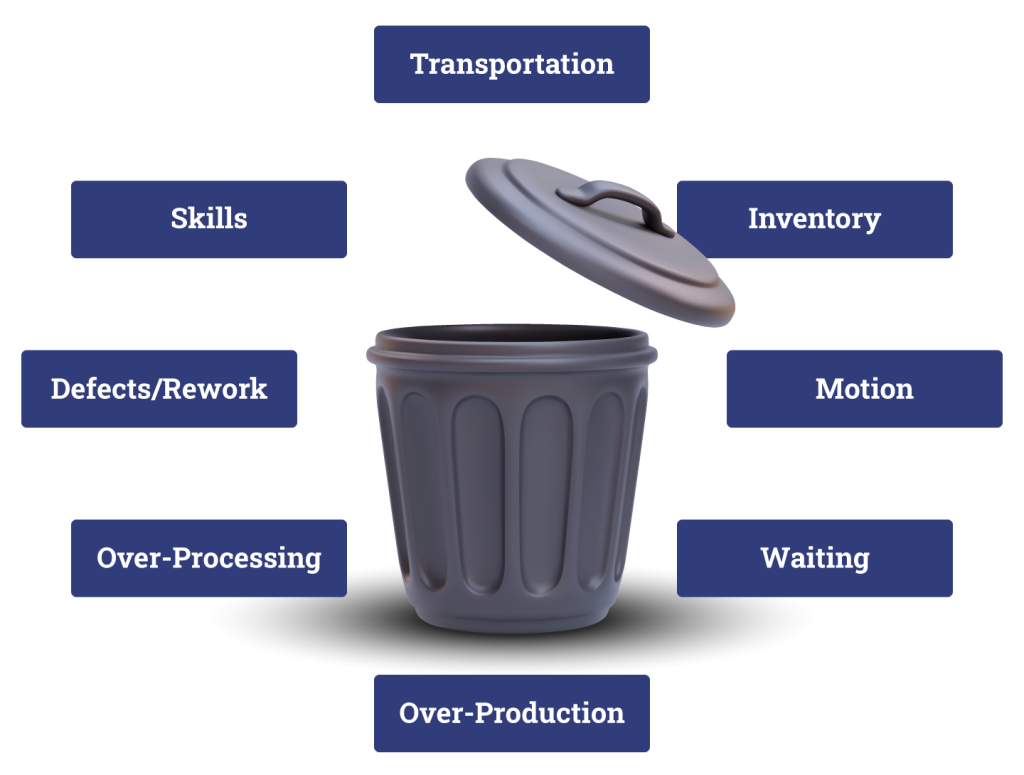What is waste?
- Any human activity which absorbs resources but creates NO VALUE – This is the direct translation of “Muda” the Japanese term for waste.
- Use of resources over and above what is actually required to produce the product or service as defined by the customer.
- If the customer does not need it or will not pay for it, then it is waste.
Waste exists as two major categories:
- Obvious waste, which is easily recognizable. Example: Undisciplined meetings, excessive paperwork systems, working ahead of schedule, and doing more than is actually required.
- Hidden waste, which refers to work which is necessary under current methods of operation, but could be eliminated if improved methods were adopted. Example: Safety stock, poor layout, excess overtime, excess labor.
There are 8 basic categories of waste:

- TRANSPORTATION – Back and forth work, handling documents more than once, unnecessary moving or handling of work between departments.
- INVENTORY – Any amount of work greater than single-piece flow. Excessive work in progress (WIP), calls on hold, people waiting in line.
- MOTION – Movement of people that adds no value (searching for paperwork, quotes, supplies, etc.)
- WAITING – When work is sent from one department to another then waits for the next processing to occur; e.g. Queues (time when no value is added to the product or service).
- OVER-PRODUCTION – Producing more than the next operation can handle.
- OVER-PROCESSING – Unnecessary processing, or procedures (work carried out on the product or service which adds no value).
- DEFECTS / REWORK – Ineffective work practices that result in poor data collection and poor data entry – results in data integrity issues; wrong customer details.
- SKILLS – Not listening to employees’ ideas or not asking them to use their brain and help solve problems.
The idea of 8 wastes is useful because it allows a company to categorize problems and then focus attention in the appropriate areas once they have been identified. It is important to always strive to minimize the amount of resources utilized to create products and services. Identification and elimination of all types of waste is imperative to succeed.
If you are interested in learning more about how to apply 8 Wastes in your workplace, a great place to start is Acuity’s Lean Foundations course. In this course you will learn how to apply 8 Wastes along with a few other common Lean tools.
